There’s something magical about childhood and mud. A spoon, a pot, a handful of soil—and suddenly you’ve got a bubbling stew that could turn frogs into princes. Mud kitchens aren’t just about mess—they’re playgrounds for imagination, laboratories for curiosity, and canvases for creativity.
When my nephew Isa (an unapologetic dirt connoisseur) first discovered a mud kitchen, his eyes lit up like he’d been handed the keys to a chocolate factory. Since then, I’ve made it my secret mission to uncover the very best mud kitchen ideas—and now, I’m sharing them with you.
1. Classic Wooden Mud Kitchen
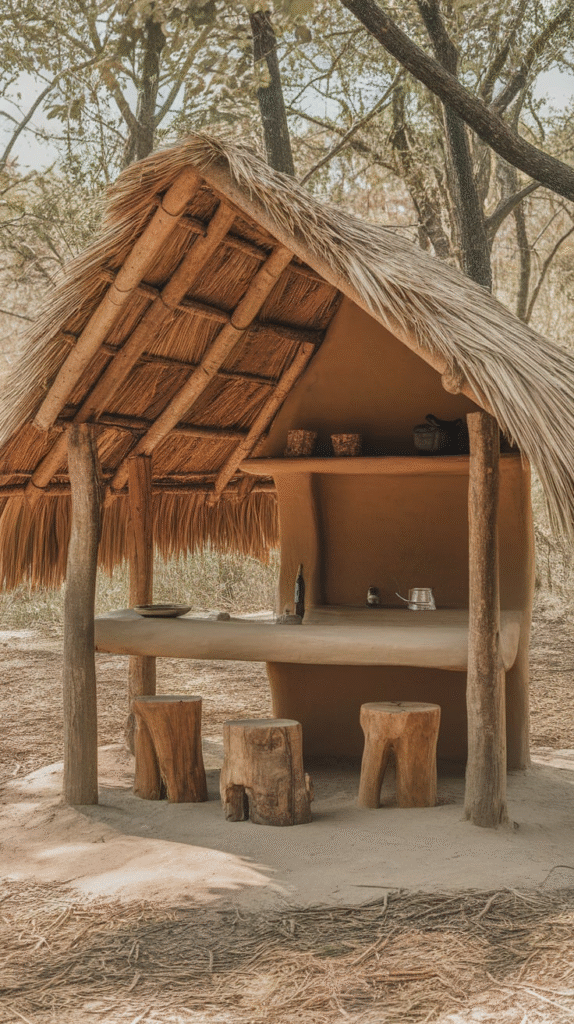
Wood is timeless, rustic, and kid-proof. A classic wooden mud kitchen, especially one made from reclaimed pallets, offers charm and sustainability. Add some old cabinet knobs and a few hooks for tools, and you’ve got a setup that looks like it came out of a countryside fairy tale.
Pro tip: Sand the wood smooth and give it a coat of outdoor sealant. That way, it survives the elements while keeping little fingers splinter-free.
2. Mud Kitchen with Real Sink and Water Access

Let’s crank things up. Attach a real sink (or even a camping sink) with a working tap, and suddenly your mud kitchen is Michelin-star ready. Use a hose or rain barrel as the water source.
It might feel like overkill, but there’s something thrilling for kids about turning on their own tap. Water is the lifeblood of mud pies, after all.
3. Pallet Counter Kitchen with Lower Shelves
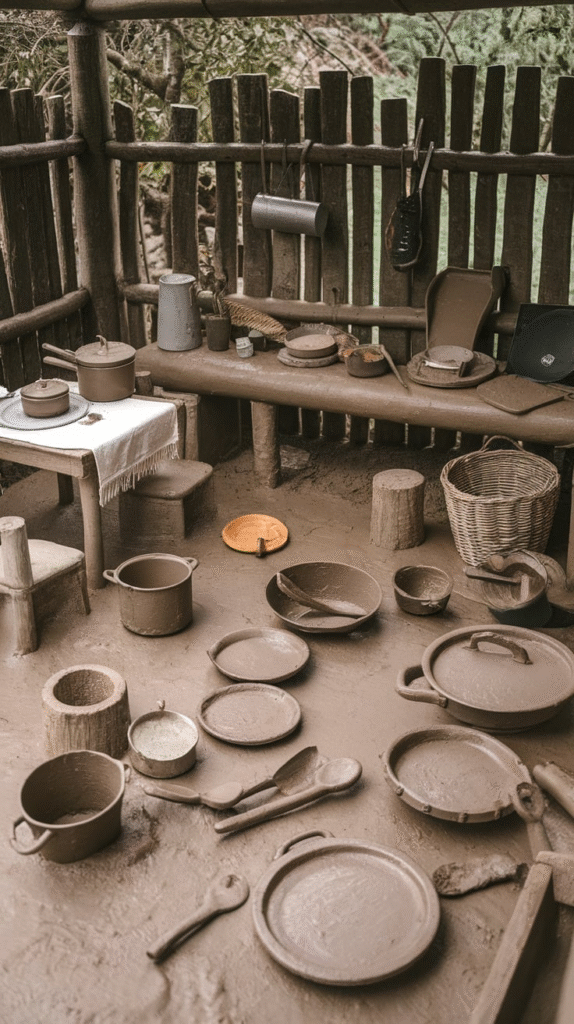
Keep it low and lovely. Pallet wood can be transformed into a sturdy counter with storage shelves underneath for bowls, pans, and the occasional pinecone. This kind of setup encourages organization—yes, even in muddy chaos.
You’ll be amazed at how kids start categorizing pebbles and labeling ‘spices’ using acorns and dry leaves. It’s like watching a tiny Gordon Ramsay in a forest bistro.
4. Colorful Painted Mud Kitchen
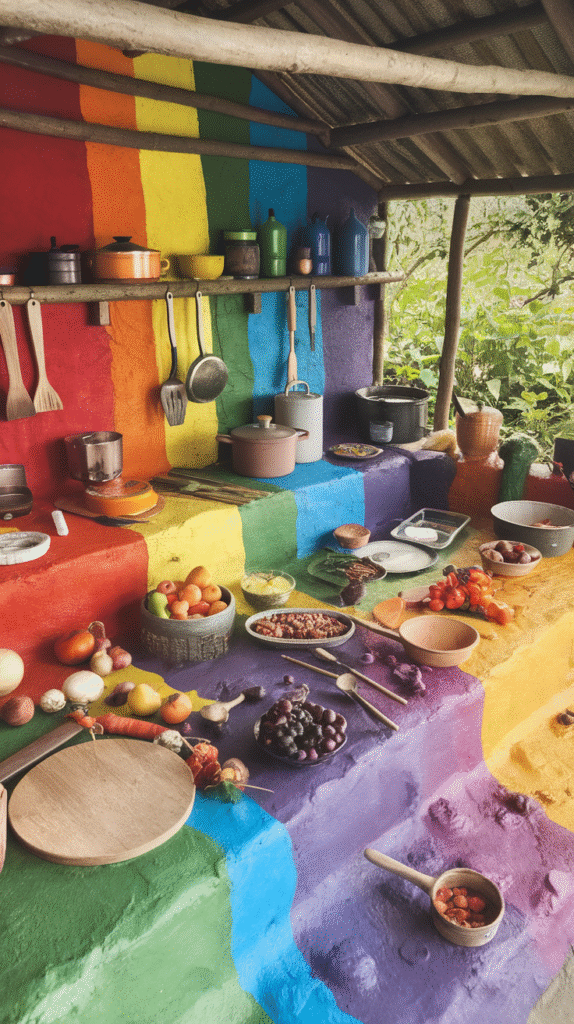
Who says mud has to mean brown? Add a splash of color to your kitchen. Turquoise counters, red cabinet doors, maybe a sunny yellow backsplash. Kids respond to color with wild enthusiasm—it activates play and exploration.
Use weather-resistant outdoor paint to keep your bright mud haven looking fresh season after season.
5. Tiny Chef’s Double-Oven Station
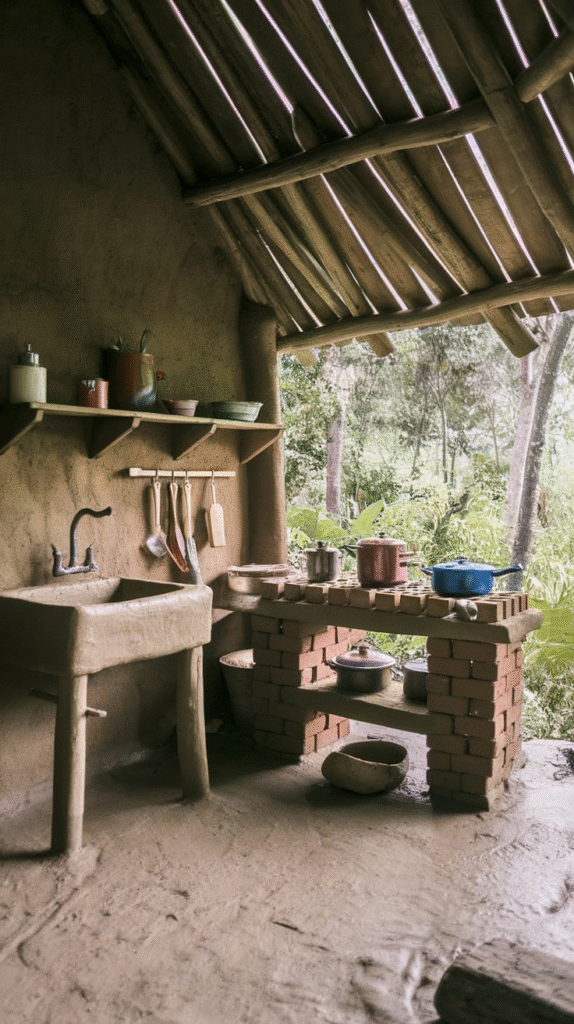
Let’s play pretend seriously. Add a mock oven (or two), complete with knobs, handles, and “hot surface” stickers. Kids love the drama of baking—especially when the cookies are made of gravel.
Repurpose old microwave doors or mini oven panels from thrift stores. Suddenly, you’ve got a gourmet kitchen worthy of pretend pastry chefs.
6. Nature-Inspired Forest Kitchen
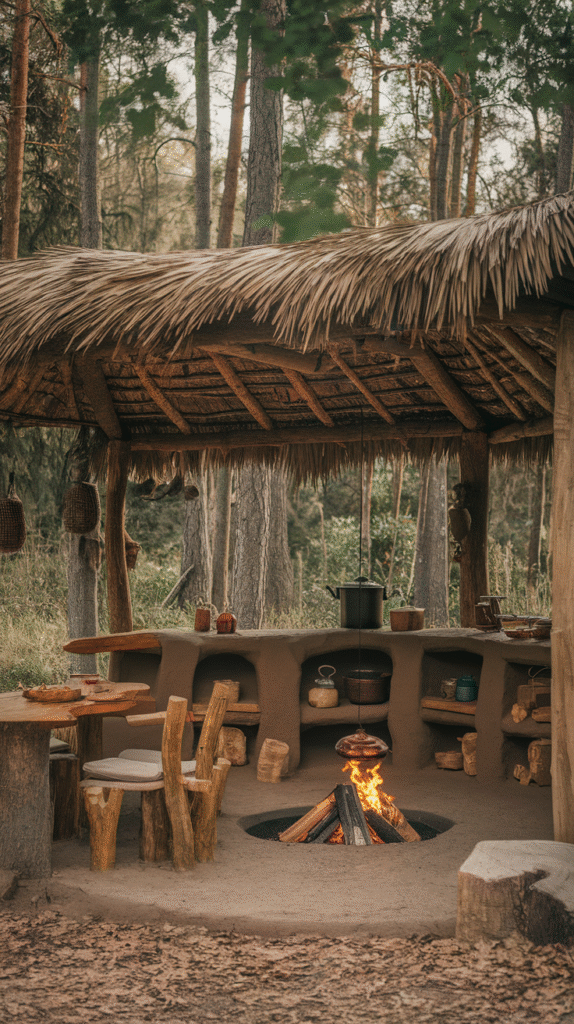
Take a minimalist approach with a wood-slab counter, log stools, and branches for hooks. Tuck the setup into a shady spot under a tree. The more naturally it blends into the landscape, the more magical it feels.
You’ll watch your kids morph into woodland creatures—serving moss salad, brewing bark tea, whispering forest spells.
7. Recycled Sink with DIY Faucet
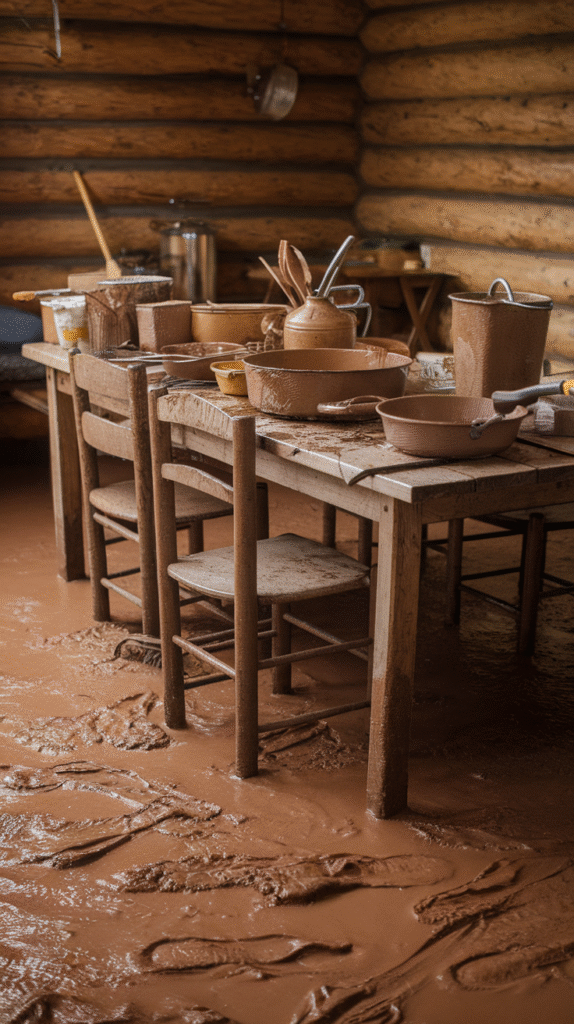
Don’t toss that busted bathroom sink. Upcycle it into your mud kitchen. Add a jerrycan with a spout or use PVC piping for a makeshift faucet. Kids don’t care if it’s pretty—they just want to pour, splash, and scrub imaginary dishes.
This is one of the most budget-friendly ways to elevate the kitchen while teaching resourcefulness.
8. Hanging Pot Rack for Authentic Vibes
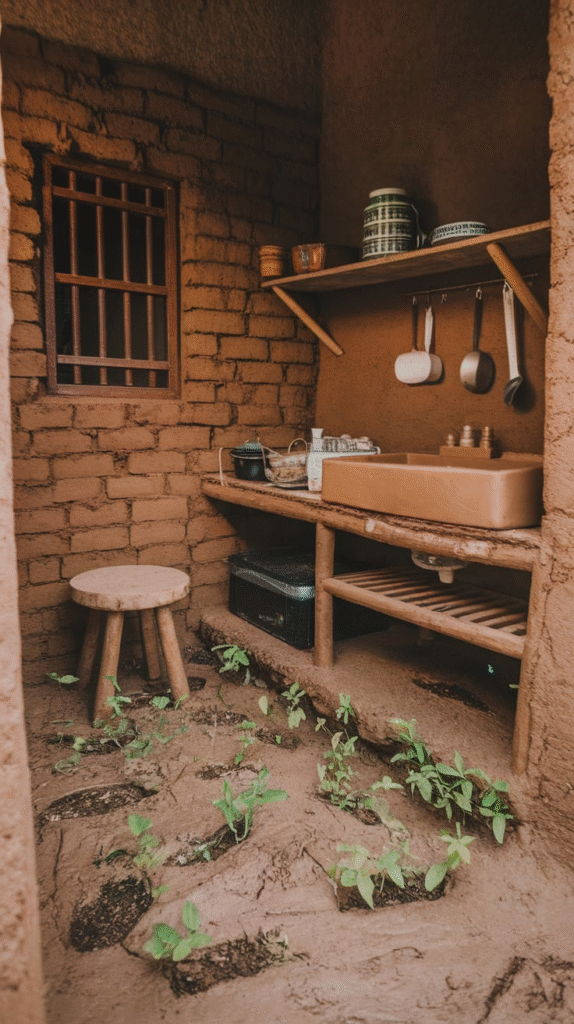
Borrow this idea from farmhouse kitchens: Install a hanging pot rack using rope and a stick or a metal bar. Dangle old utensils, pots, and ladles to create that busy-kitchen energy.
Kids love the clinking and clanking—it makes everything feel real. Plus, it helps keep tools visible and accessible.
9. Two-Sided Mud Kitchen for Shared Play
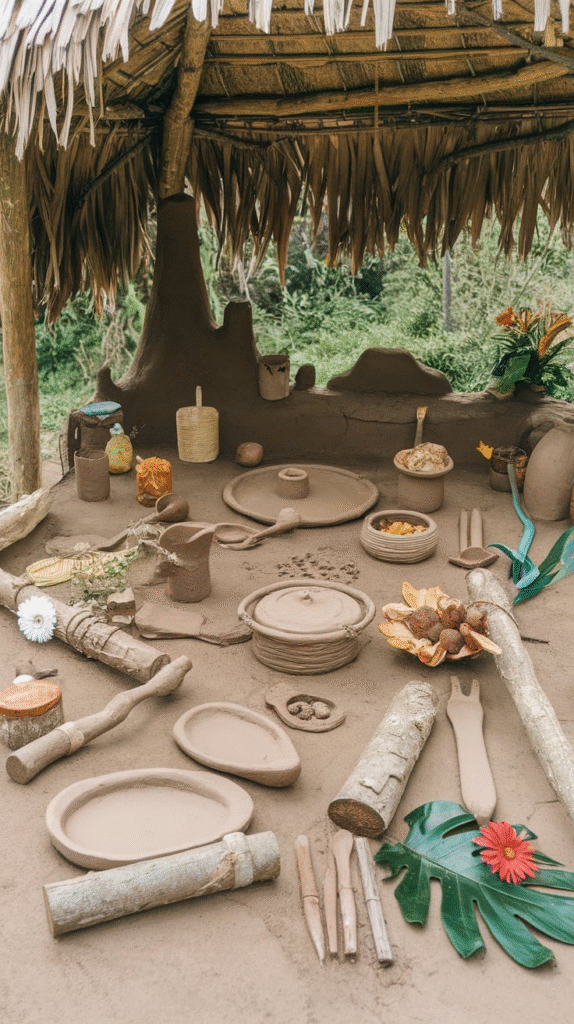
If you’ve got multiple mini chefs, build a two-sided kitchen. One side for prep, the other for cooking. Or create a sink/stove combo on one side, with a market stall counter on the other.
This setup encourages collaborative play, teaches sharing, and avoids the dreaded kitchen turf wars.
10. Mud Kitchen with Chalkboard Menu
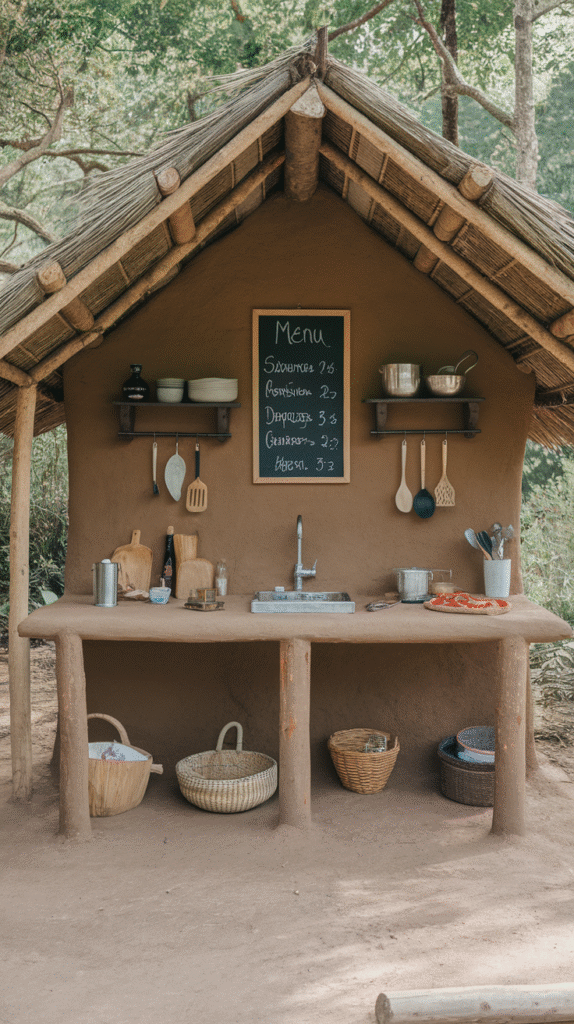
Mount a chalkboard or paint a section of wood with chalk paint. Suddenly, it’s not just a mud kitchen—it’s a restaurant with a rotating menu. Expect to see things like “Worm Soup of the Day” or “Dirt Stew with Grass Garnish.”
This adds a literacy layer to your mud kitchen. Kids practice writing, spelling, and storytelling, all while playing.
11. Sensory Garden + Mud Kitchen Combo
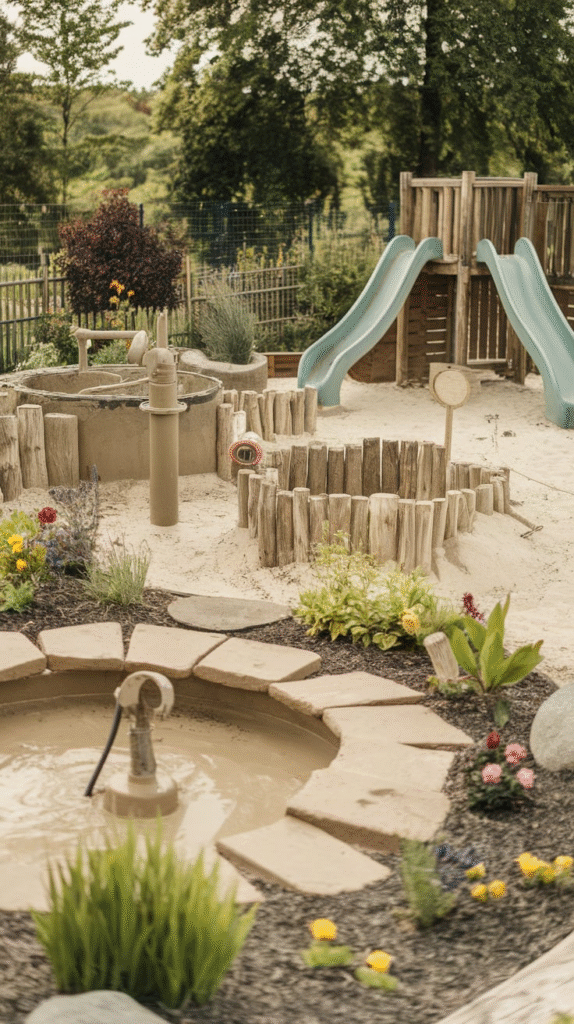
Mix play and learning by adding sensory bins with herbs, flowers, and sand. Mint, rosemary, and lavender provide smells, textures, and pretend seasonings.
It’s a feast for the senses, and it subtly teaches kids about nature, gardening, and even basic cooking concepts.
12. Modular Crate Kitchen
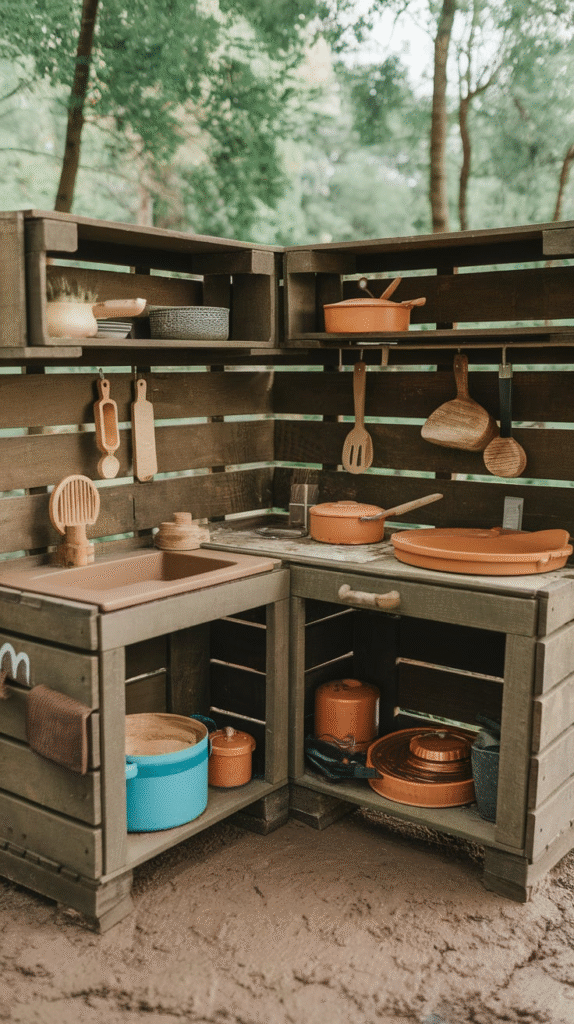
If you’re short on space, think modular. Stack wooden crates into counters, cubbies, and sinks. It’s portable, rearrangeable, and you can add to it over time.
Crates are the LEGO bricks of mud kitchens—cheap, creative, and endlessly flexible.
13. Vintage Cabinet Makeover
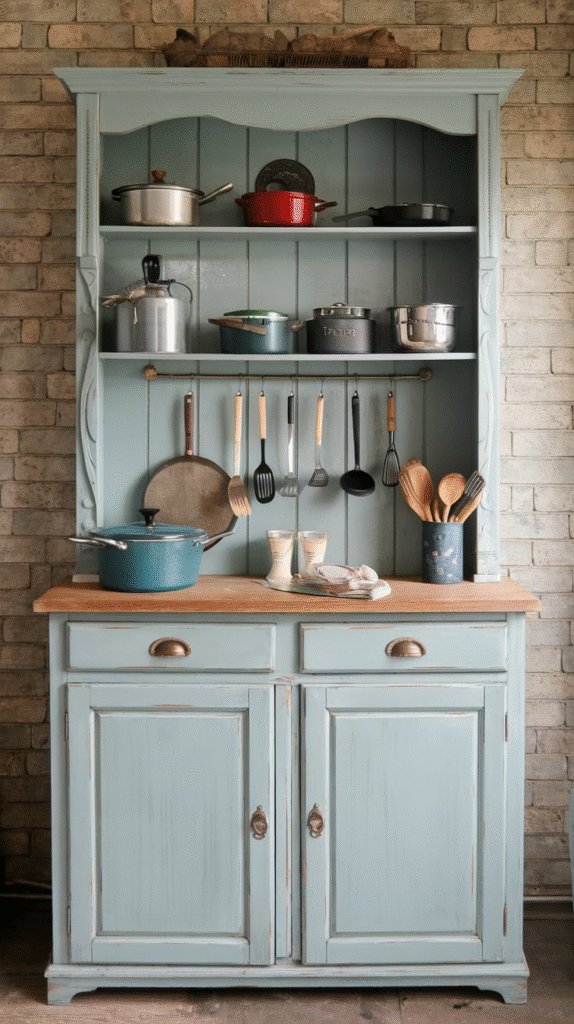
Snag a used cabinet or sideboard from a garage sale. Sand it down, add some kid-sized fixtures, and boom—you’ve got a charming, vintage-style mud kitchen with built-in storage and character.
There’s something nostalgic about mixing play with old-world charm. It’s like giving your child a piece of history to tinker with.
14. Compact Balcony or Patio Mud Kitchen
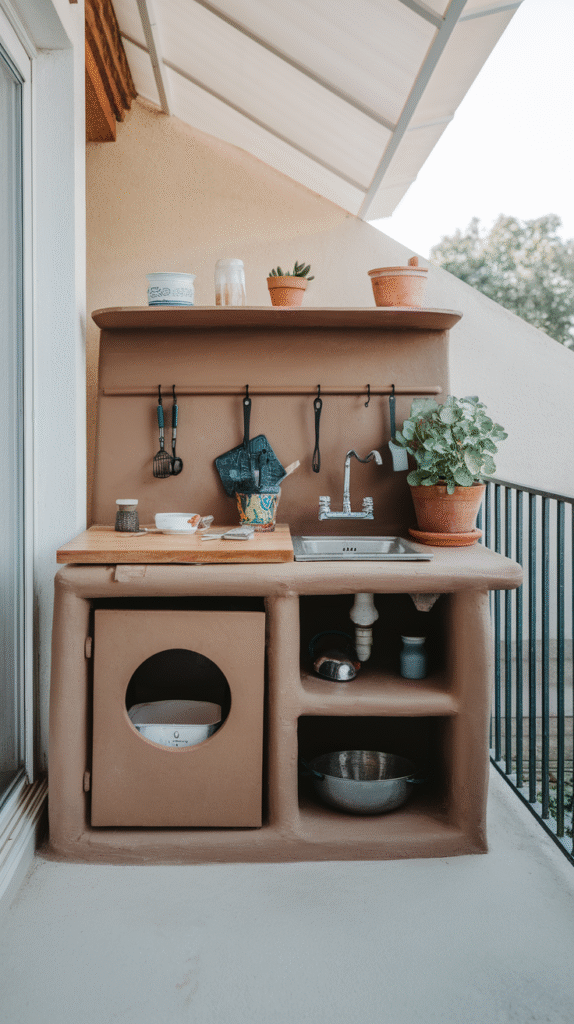
No yard? No problem. Design a compact mud kitchen for small spaces, using narrow shelving, plastic bins, and rolling carts. Keep a water jug nearby and sweep up easily after play.
Urban living doesn’t mean kids should miss out on messy magic. The trick is smart storage and washable surfaces.
15. DIY Appliance Dials and Knobs
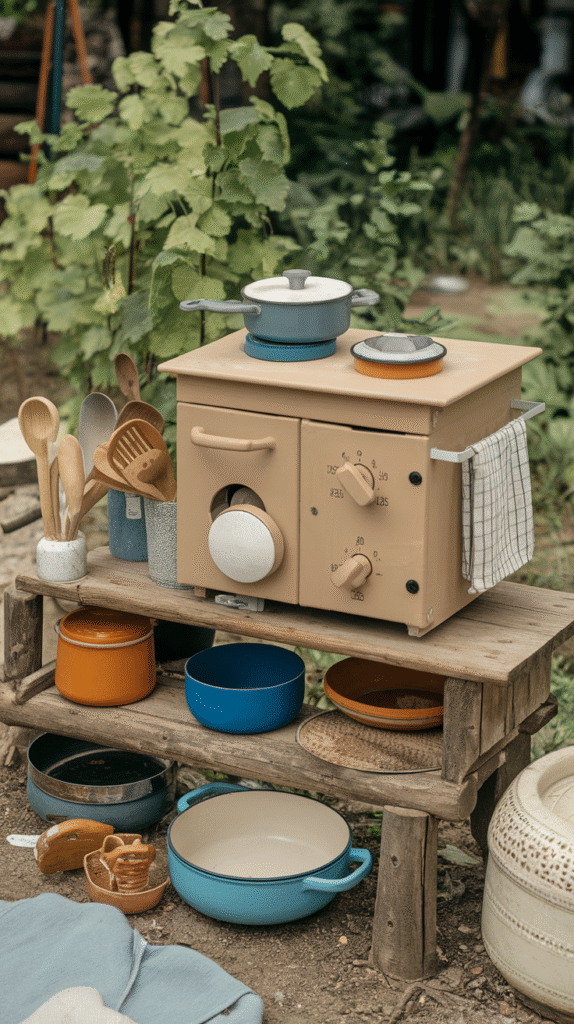
Add fake burners using painted circles, repurpose soda bottle caps for stove knobs, or glue old dials from broken electronics. Suddenly, your mud kitchen has realistic appliances without electricity or expense.
Kids love pushing buttons—especially when they don’t do anything dangerous.
16. Themed Mud Kitchen: Ice Cream Stand or Bakery

Give your kitchen a twist. Turn it into a “Mud Cream” parlor with scoops, cones (made from paper), and flower toppings. Or go full “bakery” with pie tins and cupcake molds.
Changing the theme gives new life to the same space. It stretches your child’s imagination and adds excitement to every play session.
17. Upcycled Mud Kitchen from Old Furniture
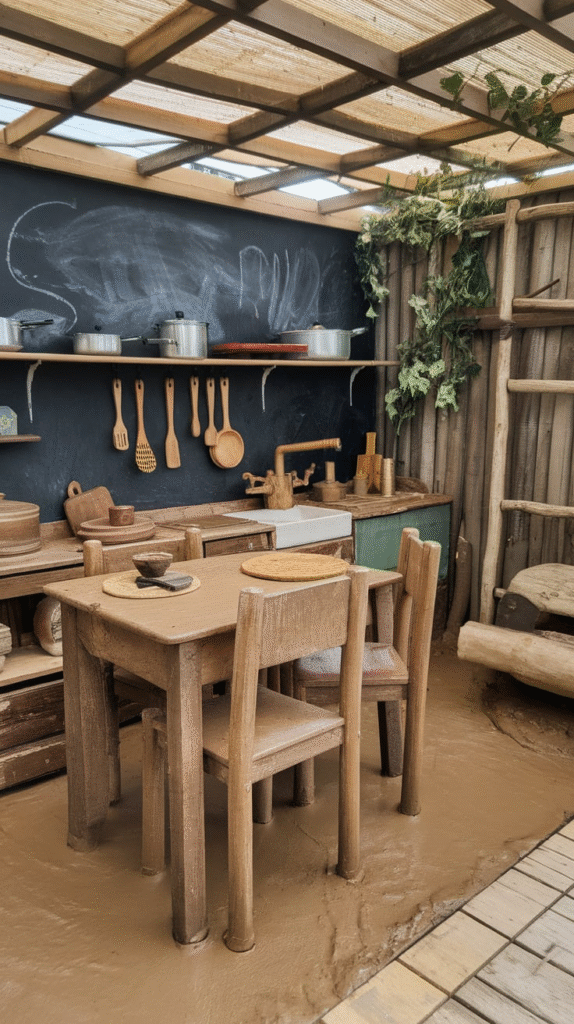
Transform that rickety dresser into a multi-level mud kitchen. Remove a few drawers, cut a hole for a bowl sink, and use leftover wood for counters.
It’s a creative challenge—and kids pick up on your enthusiasm when you involve them in the process.
18. Add a Roof or Canopy for All-Weather Fun
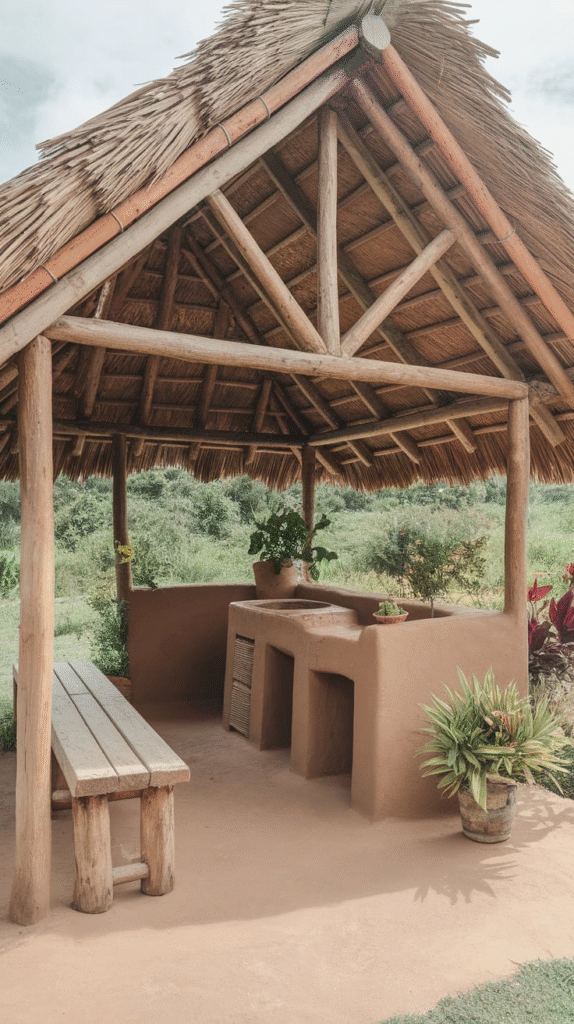
Sun blazing? Rain falling? No problem. Add a roof, tarp, or umbrella over your kitchen. It turns the space into a little playhouse and makes it usable year-round.
A covered mud kitchen becomes a sanctuary of creativity in all weather. Just make sure it drains properly.
19. Eco Mud Kitchen with Compost & Rain Barrel

Take it to the next level by adding a mini compost bin and a rainwater collector. It teaches sustainability and gives kids real-world insights into waste, water, and nature cycles.
They’ll mix compost tea, water their pretend plants, and understand how things break down and grow again—all while slinging soil and playing chef.
Building Tips: Keep It Safe, Keep It Sturdy

No matter how whimsical your mud kitchen gets, a few basics matter:
- Stability is non-negotiable. Bolt structures down if needed.
- Materials should be weather-resistant or easy to cover when not in use.
- Avoid sharp edges, rusty metal, and treated lumber unless fully sealed.
- Supervision helps—but independent play is the goal. Let kids take the lead once the kitchen’s safe and set up.
The Learning Power of Mud Kitchens
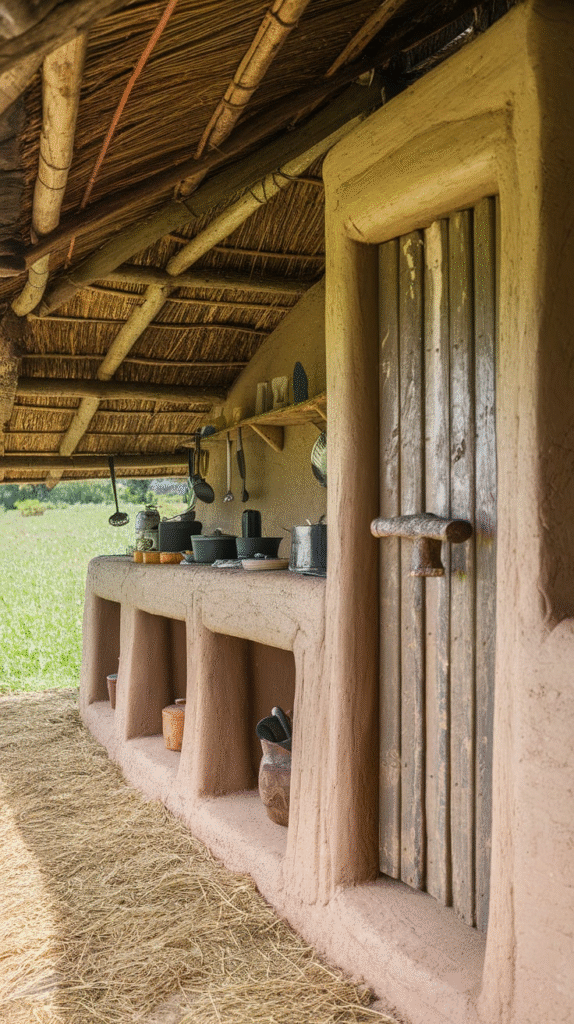
Beyond the giggles and mess, mud kitchens build real-life skills:
- Fine motor skills from scooping, pouring, and stirring.
- Social development through sharing, role-play, and communication.
- STEM learning via mixing, measuring, and observing changes in materials.
- Language and storytelling from naming dishes, inventing characters, and creating menus.
There’s a reason many educators and therapists include mud kitchens in their programs. They’re sensory-rich, unstructured, and full of growth opportunities.
Conclusion

When I look back at my own childhood, I remember mud pies, not iPad games. There’s something deeply human about getting your hands dirty, creating something ridiculous, and laughing while doing it.
Mud kitchens give children a tiny world to rule, a place where every stone is a treasure and every stick stirs a potion of possibility. You don’t need a big budget—just imagination, patience, and a willingness to embrace a little chaos.

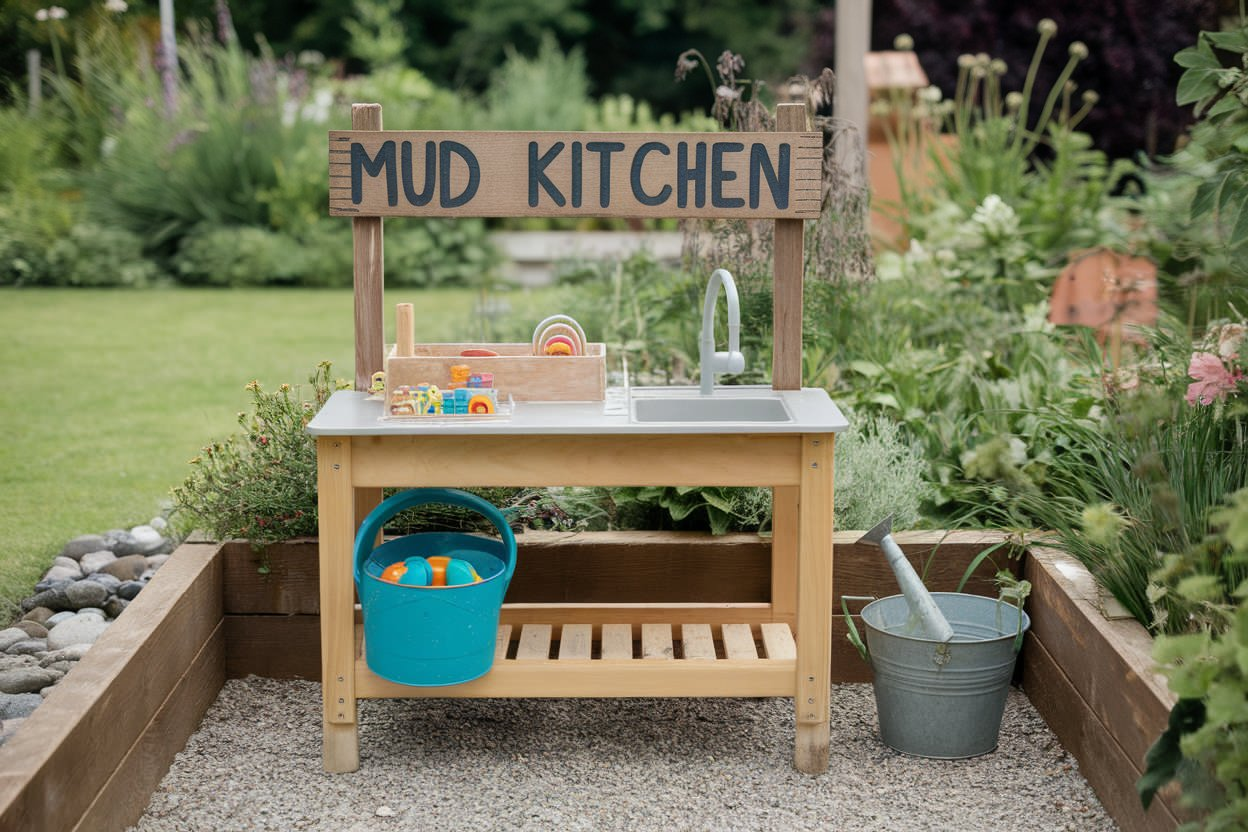
Leave a Reply